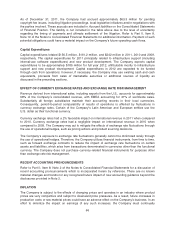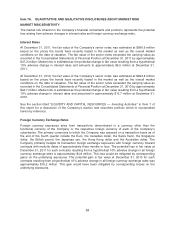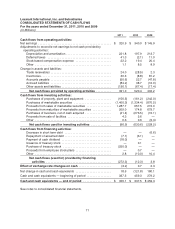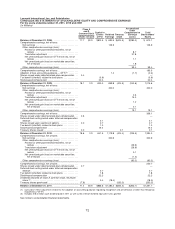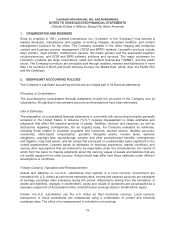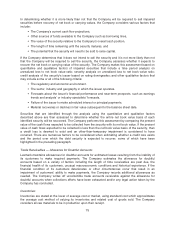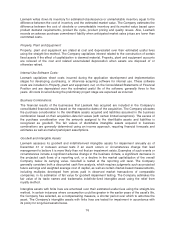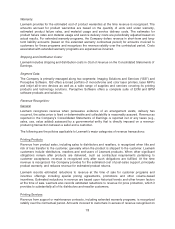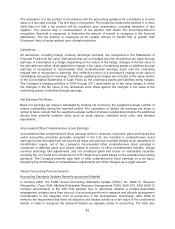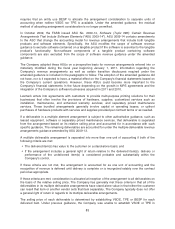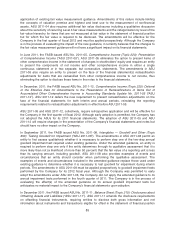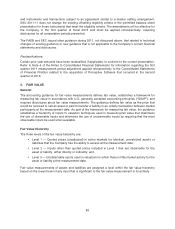Lexmark 2011 Annual Report Download - page 80
Download and view the complete annual report
Please find page 80 of the 2011 Lexmark annual report below. You can navigate through the pages in the report by either clicking on the pages listed below, or by using the keyword search tool below to find specific information within the annual report.Lexmark writes down its inventory for estimated obsolescence or unmarketable inventory equal to the
difference between the cost of inventory and the estimated market value. The Company estimates the
difference between the cost of obsolete or unmarketable inventory and its market value based upon
product demand requirements, product life cycle, product pricing and quality issues. Also, Lexmark
records an adverse purchase commitment liability when anticipated market sales prices are lower than
committed costs.
Property, Plant and Equipment:
Property, plant and equipment are stated at cost and depreciated over their estimated useful lives
using the straight-line method. The Company capitalizes interest related to the construction of certain
fixed assets if the effect of capitalization is deemed material. Property, plant and equipment accounts
are relieved of the cost and related accumulated depreciation when assets are disposed of or
otherwise retired.
Internal-Use Software Costs:
Lexmark capitalizes direct costs incurred during the application development and implementation
stages for developing, purchasing, or otherwise acquiring software for internal use. These software
costs are included in Property, plant and equipment, net, on the Consolidated Statements of Financial
Position and are depreciated over the estimated useful life of the software, generally three to five
years. All costs incurred during the preliminary project stage are expensed as incurred.
Business Combinations:
The financial results of the businesses that Lexmark has acquired are included in the Company’s
consolidated financial results based on the respective dates of the acquisition. The Company allocates
the purchase consideration to the identifiable assets acquired and liabilities assumed in the business
combination based on their acquisition-date fair values (with certain limited exceptions). The excess of
the purchase consideration over the amounts assigned to the identifiable assets and liabilities is
recognized as goodwill. The fair values of identifiable intangible assets acquired in business
combinations are generally determined using an income approach, requiring financial forecasts and
estimates as well as market participant assumptions.
Goodwill and Intangible Assets:
Lexmark assesses its goodwill and indefinite-lived intangible assets for impairment annually as of
December 31 or between annual tests if an event occurs or circumstances change that lead
management to believe it is more likely than not that an impairment exists. Examples of such events or
circumstances include a significant adverse change in the business climate, a significant decrease in
the projected cash flows of a reporting unit, or a decline in the market capitalization of the overall
Company below its carrying value. Goodwill is tested at the reporting unit level. The Company
generally considers both a discounted cash flow analysis, which requires judgments such as projected
future earnings and weighted average cost of capital, as well as certain market-based measurements,
including multiples developed from prices paid in observed market transactions of comparable
companies, in its estimation of fair value for goodwill impairment testing. The Company estimates the
fair value of its trade names and trademarks indefinite-lived intangible asset using the relief from
royalty method.
Intangible assets with finite lives are amortized over their estimated useful lives using the straight-line
method. In certain instances where consumption could be greater in the earlier years of the asset’s life,
the Company has selected, as a compensating measure, a shorter period over which to amortize the
asset. The Company’s intangible assets with finite lives are tested for impairment in accordance with
its policy for long-lived assets below.
76


